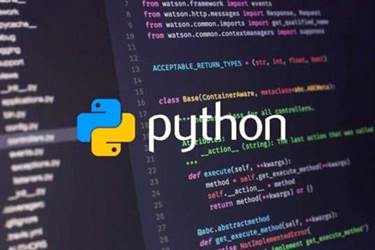Content
- Cisco Secure Cloud Analytics
- How Google Pay, Apple Pay, and Samsung Pay Protect Your Card Details
- Automated security testing
- Frequently Asked Questions Aout Cloud Application Security
- What is Cloud Application Security and Why Is it Important?
- What Is Container Security?
- Do you need cloud application security?
Use IAM to define permissions on a granular basis for containers or serverless functions. Ensure each element has the least privileges it needs to perform its activities. Use zero trust principles to ensure that all communications, even between trusted entities, are authenticated and verified. Cloud backup services typically charge a fee based on the storage space used, data transfer bandwidth, and frequency of access. They can be used to backup both on-premises and cloud-based resources.
- Nor will they slow down the development of their own products for the sake of CASB vendors.
- You can create a strong defense with intrusion detection, firewalls, access control, and anti-malware.
- Proxy CASBs route traffic through a separate proxy between user devices and cloud apps.
- These tools provide deep visibility into data access vulnerabilities and entitlement risks.
For example, if a cloud storage container holds sensitive data, external access should be locked, and there should be no way for an administrator to open access to the public Internet. Identity management and weak authentication – cloud authentication security requires managing identity across different services. Poorly executed identity management can lead to data breaches and access authorization issues—weak identity management gives cybercriminals easy access to credentials and sensitive systems.
Cisco Secure Cloud Analytics
Securing cloud applications is critical to protecting sensitive data and ensuring business continuity. With the rise of cloud computing, new security threats have emerged, but there are many solutions and best practices available to help mitigate these risks. Organizations can benefit from implementing a multi-layered approach to cloud app security, including using tools like CASBs and WAAP, automating processes, and maintaining strong access controls. There is no shortage of security solutions available to help mitigate cloud application security threats. Cloud Access Security Brokers , for instance, act as a gatekeeper to cloud services and enforce granular security policies.

A sizable portion of enterprise productivity happens via cloud-based apps like Microsoft 365, Adobe Experience Cloud, SAP ERP, etc. Therefore, the cloud security software should protect specific apps, ensuring that the data generated through them isn’t at risk. You might even look for vendor-specific cloud security tools, like software designed to protect Microsoft apps. And intrusion detection are the foundational tactics that your cloud security platform needs to employ.
How Google Pay, Apple Pay, and Samsung Pay Protect Your Card Details
Data, servers, applications and employees all have moved to the cloud. It is time for companies to deploy a new set of solutions to provide a Secure Service Edge . It is time for zero trust security in an increasingly dangerous world.
These three environments offer different types of security configurations, based on the shared responsibility model. This model defines how resources are utilized, how data moves and where, how connectivity is established, and who takes care of security. In cloud environments, cloud providers and https://globalcloudteam.com/ users share responsibility for security. Responsibility levels depend upon your cloud computing setup and your choice of a cloud service provider. The good news is CTOs, CTsO, and CISOs can leverage API-based cloud application security platforms to roll with the punches without skipping a beat.
Automated security testing
Include the development environment used to provision cloud applications and open-source libraries used by DevOps teams. Check API configurations, and use any threat detection systems provided by app developers. Set up automated notifications about unusual access requests or network traffic cloud security solutions patterns. More advanced IAM tools actively check for unsafe credential storage. They alert security teams if staff store credentials digitally or share information insecurely. Misconfigured cloud apps – Gartner reports that as many as 99% of cloud security issues are due to client error.

In many instances, DevOps often contributes to this challenge as the barrier to entering and using an asset in the cloud — whether it is a workload or a container — is extremely low. Developers can easily spawn workloads using their personal accounts. These unauthorized assets are a threat to the environment, as they often are not properly secured and are accessible via default passwords and configurations, which can be easily compromised. Cloud applications are vulnerable to a wide range of threats that may exploit system misconfigurations, weak identity management measures, insecure APIs or unpatched software. Here we review some of the most common threats organizations should consider when developing their cloud application security strategy and solution.
Frequently Asked Questions Aout Cloud Application Security
Cloud compliance systems are similar to CWPP, but they are different in that CWPP focus on controlling security in the cloud environment and enforcing security controls. While cloud compliance solutions are passive tools that can notify about violations, provide remediation instructions, and generate detailed reports and audits. MDR is a managed service that hunts, detects, and eliminates threats. MDR services typically include endpoint detection and response technology and human experts to operate and maintain it. CSPM reviews cloud environments and detects misconfigurations and risks pertaining to compliance standards. Its main goal is to automate security configuration and provide central control over configurations that have a security or compliance impact.

Unified management – security teams are often overworked and understaffed, and so cloud security solutions must provide unified management interfaces. Teams must be able to centrally manage a wide range of cloud security solutions from one pane of glass. Gaps in compliance – compliance standards help prevent data breaches by binding organizations into a set of security rules.
What is Cloud Application Security and Why Is it Important?
Fortinet Cloud Security empowers organizations to achieve digital acceleration by securing any application on any cloud. Runtime Application Self Protection is a security solution designed to provide personalized protection to applications. It leverages insight into an application’s internal data and state to enable it to identify threats at runtime that other security solutions might have otherwise missed. Having a plethora of cloud security managed services, we are the right partners for any entrepreneur or enterprise looking to secure their cloud application and/or data.
